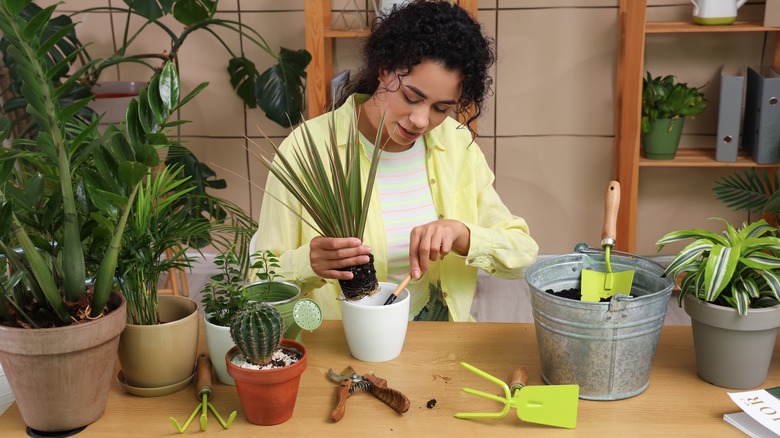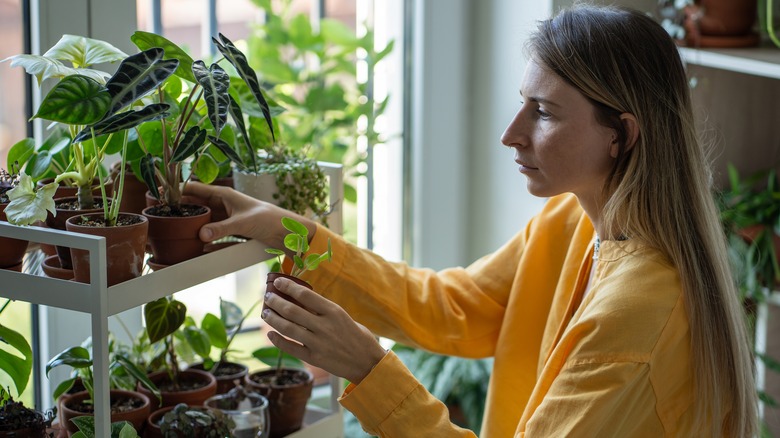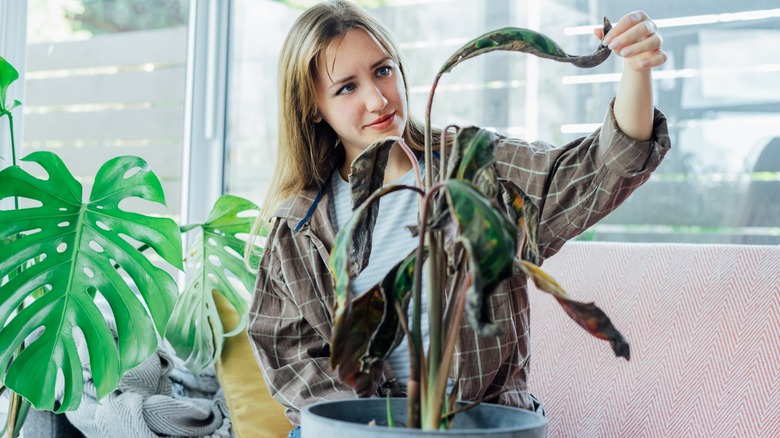Don't Reuse Soil In Your Garden Without Considering This First
Gardening can be an expensive hobby, especially if you love fancy planters and exotic plants. One way to cut costs is to reuse your potting soil. We spoke to House Digest's master gardener Tiffany Selvey about safely reusing the soil. In an exclusive interview, Selvey said, "If you can use what you have with a few amendments, it's cheaper and easier than buying new potting soil." However, our expert warns that there is a risk of spreading diseases to your new plants and neglecting their nutrient needs if you don't prep the soil first.
Sure, you can compost old soil, but it can be better for your pocket and the environment to simply amend it. Selvey shared her pro tips for reusing potting soil, so you can reintroduce it to your outdoor garden, raised beds, or containers and use it to grow healthy plants. Purchasing new potting soil every year is a chore you can cross off your to-do list.
Used potting soil can harbor pathogens
Your soil needs to be in the right condition before it can be reused. "If the soil has been too wet or the plant it previously contained came home with pathogens, those fungal issues, disease, or pests could harm new plants," Selvey exclusively told House Digest. Fortunately, even if the soil is plagued by pathogens, it can still be reusable, but you'll have to sterilize it first before it can become a home for new plants. One way to do so is solarization.
Soil solarization involves heating the soil to 140 degrees Fahrenheit, using the sun's energy, in order to eliminate pests, fungi, viruses, and weeds. It is an all-natural, chemical-free method to sterilize used soil. "You can do this to potting soil by laying a tarp on the ground, dumping the soil onto the tarp so it's no thicker than 2 inches deep, then covering that with black or clear plastic," Selvey explained. "The length of time it will take for solarization to be complete [will] depend on the weather, so a soil thermometer is helpful." It is also believed that rooting plants in soil that went through solarization can encourage more growth and quality produce. However, this sterilization process can also leave your soil lacking nutrients, which is another concern with previously used potting soil, even if it doesn't go through solarization.
There can be a lack of nutrients in used soil
Another thing to keep in mind is the available minerals in the soil. "Even if the soil is free of pathogens, one of the downsides is it may not have many nutrients," Selvey exclusively told House Digest. "Because the soil in containers is freely draining and must be watered more often than the ground, nutrients flush out more quickly." Major minerals like nitrogen, potassium, and phosphorus are essential for plant growth. Yet, chances are, there won't be a high amount of these nutrients within used potting soil for your new plants. There can be trace amounts of these much-needed nutrients, but it is best to enhance the soil using your own DIY compost or fertilizer.
That is the method Selvey uses in her garden. She said, "If the previous plants grew well, I don't see any pests, and it hasn't been water-logged, I'll just add a few inches of compost to the top. I mix that in and add my plants or seeds." Fortifying the soil will ensure your new plants get everything they need. Reusing soil is convenient and money-saving, as long as you make sure it is safe for your plants and can provide the proper nutrients.


